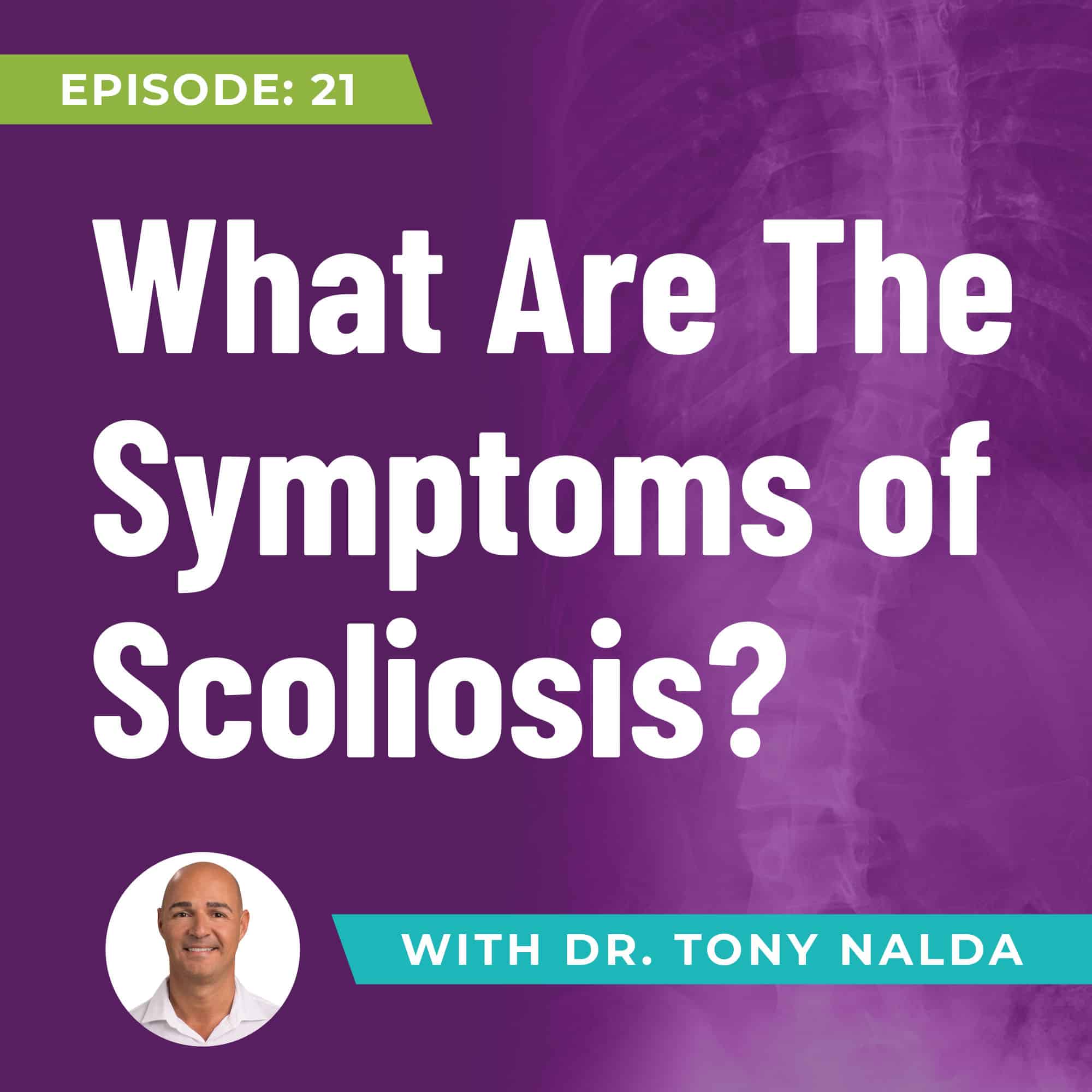Episode 21: What Are The Symptoms of Scoliosis?
Do you think you have Scoliosis?
Scoliosis is a very complex problem when associated with the spine and the body. The first thing you want to understand when we look at Scoliosis is what is it.
Scoliosis is defined as a lateral curvature spine of 10 degrees or more with rotation.
It is also defined into specific severities such as:
- Mild Scoliosis which is between 10 and 25 degrees on a Cobb angle.
- Moderate Scoliosis curve 25 and 40 degrees.
- Severe Scoliosis is 40 degrees and greater.
Dr. Nalda also has a fourth category which he calls Very Severe Scoliosis and this is where Cobb angle measurements can be of 80 degrees or greater.
A Cobb Angle is the measurement that you use to measure Scoliosis on an X-ray.
Let’s talk about two main types of Scoliosis, Scoliosis in children and Scoliosis in adults. What are the signs and symptoms that are associated with both of these types?
The most common signs when it comes to Scoliosis are:
- Rib Protrusion: Meaning from the back, when somebody bends forward, they see ribs that will stick more back or more posterior. The most common side that will stick posterior will be the right side/ So they have the right side, and the left side sticking forward.
- They can also be a tilting appearance. The torso feels like it’s tilted relative to the body below.
- Legs can also appear to look different lengths meaning that people’s pants are not fitting right, one side of the pants would look a bit lower than the other.
- Hips can be uneven. You can see the waist side, one side looks more “waisty” or has a bigger waist and one side can be very flat.
- They can also have asymmetrical shoulder blades
- And they tend to feel pain.
For Adolescent Scoliosis patients, it’s uncommon for them to actually experience pain but adult patients tend to feel pain more frequently.
When an adolescent has Scoliosis, what’s causing their curve to worsen is the fact that they’re growing. This growth that causes the curve to worsen is elongating the body, it’s making the body longer so it’s causing no compression to the spine.
What makes an adult case progress overtime, it’s gravity compressing down on their body which is increasing their curve. This compression leads to compression of the nerves, the tissues that exit the spine, which almost always will lead to pain at some point.
And this is the reason why adults usually feel pain and children do not.
There’s no relationship between the size of the curve and how much pain somebody feels, it’s how much the curve progresses as an adult which is most likely what’s going to cause their pain.
The common thing that people are worried about, they think that one of the symptoms of Scoliosis is that the spine will start pressing on the heart or lungs which will lead to lung or heart failure.
This is actually the reason why they started Scoliosis surgery, 56 years ago, they thought that if the curve got to a certain size, they were going to press on a heart or a lung and cause death but that’s actually very rare.
For more information about the symptoms of Scoliosis for both adolescent and adult patients, please check out Dr. Nalda’s podcast below.
Musicbed SyncID: MB01ACKWVVF13S6
Podcast: Play in new window | Download
Subscribe: RSS
Dr. Tony Nalda
DOCTOR OF CHIROPRACTIC
After receiving an undergraduate degree in psychology and his Doctorate of Chiropractic from Life University, Dr. Nalda settled in Celebration, Florida and proceeded to build one of Central Florida’s most successful chiropractic clinics.
His experience with patients suffering from scoliosis, and the confusion and frustration they faced, led him to seek a specialty in scoliosis care. In 2006 he completed his Intensive Care Certification from CLEAR Institute, a leading scoliosis educational and certification center.
About Dr. Tony Nalda
 Ready to explore scoliosis treatment? Contact Us Now
Ready to explore scoliosis treatment? Contact Us Now








